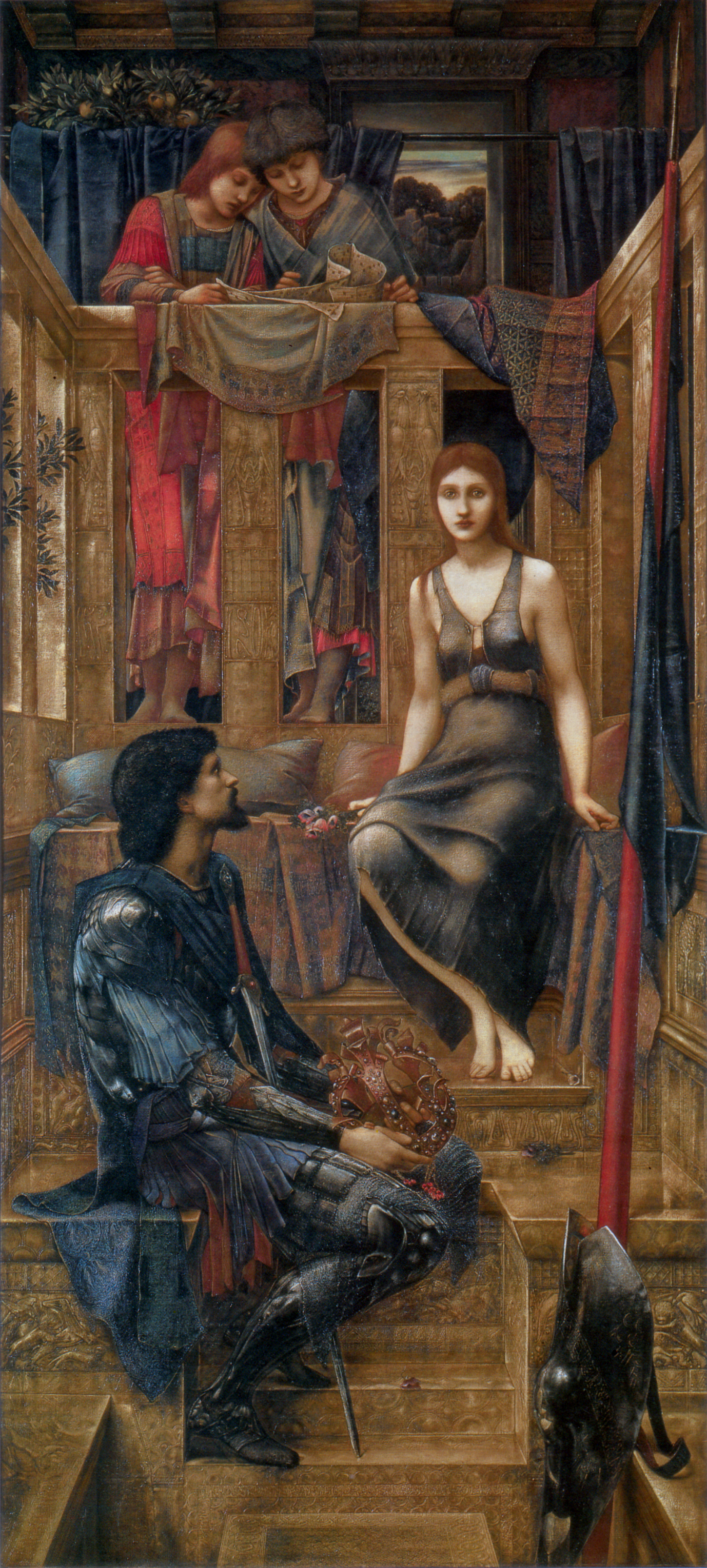Edward Burne-Jones, King Cophetua and the Beggar Maid, 1884
115.5x53.5 in.
Edward Burne-Jones (1833-1898) was a Pre-Raphaelite painter as well as a designer who worked with William Morris. Like many Pre-Raphaelite painters, Burne-Jones drew on Classical myth (such as his cycle depicting the story of Perseus) and traditional English stories, especially Arthurian legend. The Beguiling of Merlin is among Burne-Jones' most famous works. King Cophetua and the Beggar Maid is based on a a tale referenced throughout English literature and retold several times, such as in a poem by Alfred, Lord Tennyson. The story tells of the African king Cophetua who felt no desire for any woman until he sees Penelophon begging on the street. He is immediately overcome by love and approaches her, asking her to be his queen. She agrees and the couple have a quiet, prosperous reign. After many years together, they die and are buried in the same tomb. It is a rather simple story that Burne-Jones rendered into a fascinating painting. Among the many interesting elements is the complex depiction of space. Burne-Jones successfully communicated the recession of space, while maintaining the flatness of the picture plane that often characterizes Pre-Raphaelite works. Every element of the painting is incredibly detailed, from Cophetua's armor to the stairs they sit on and the beams that rise behind Penelophon. While Cophetua looks adoringly up at his love, Penelophon looks out at the viewer, and this is perhaps the most interesting aspect of the work. Her expression is not of love for this king, or joy at leaving her life of poverty behind. Instead she looks incredibly saddened, or even lifeless. Could this perhaps suggest a darker reading of the story? Perhaps Burne-Jones was trying to suggest another version wherein Penelophon feels no love for Cophetua and agrees to the marriage out of her need to survive. The exact meaning of this gaze is unclear, but it makes this complex painting extremely engaging.

No comments:
Post a Comment